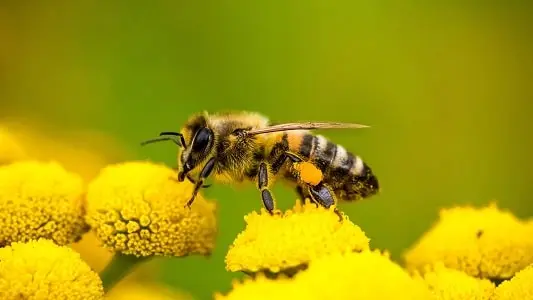We all are familiar with insects; we often see them around us. It is estimated that 90% of the total animal life forms on the Earth are insects, Surprised? You do not have to be, yes, it is true, it is just that you and I have not seen all of them as not all of them could be found in the same environment.
Majority of the insects hatch from eggs, if you are a bookworm, you would have read the fantasy stories about giant insects that once dominated the Earth. Recent discoveries point out these stories to be true. Giant fossilized insects including giant dragonflies with a wingspan of an average 70cm have been found from the Paleozoic Era.
Insects are not just limited to land and air, they are found in water too. However, not all of them are dangerous or unsafe for human life. Insects that are labeled dangerous and unsafe could be in two different ways. The insects that affect human life directly and the insect that effect human life indirectly, here is the list of 10 dangerous insects in India.
List of Most Dangerous Insects in India
10. Indian Hemiptera
Most of the people often consider small insects to be less dangerous and just neglect their existence. However, the Indian Hemiptera is one of the largest exopterygote types of insect and is found in abundance in India. These insects indirectly affect the humans as they entail directly or indirectly destroy the vegetations that are cultivated by humans for their consumption. With this told, the Indian Hemiptera consist of several species of bugs, in which, as I have already mentioned some destroy the vegetation, on the other hand, there are water bugs that affect the fish culture. Apart from these two, some species that belong in Indian Hemiptera are known to be bloodsuckers and are reported to carry disease-causing microorganisms.
9. Termites
Like the Indian Hemiptera, Termites are also found in abundance in India. Most of you might know that termites are known to cause damage to unprotected buildings especially the wooden structures. Yes, they are fond of eating wood and that too without being detected easily. According to the experts, in India alone, there are over 220 different species of termites. Termites are often found at places where there is humidity. It is said that some species of termites dig as deep as 100ft below the earth in search of water. Termites are different from other insects in their labor, they have a different hierarchy consisting of worker termites and soldier termites that are sterile and they will have a fertile king and more than one fertile queen whose function is the reproduction. One of the notable things about termites is that the queen termites are the longest living insects in the world, they live up to 30-50-years.
8. Cockroaches
You might be surprised to hear that cockroaches are termed as dangerous insects. Do you know that apart from running around inside our home, they are actually one of the major carries of disease-causing microorganisms? Yes, cockroaches are said to carry microorganisms that cause Typhoid, Polio, Diarrhea, Poliomyelitis, and Dysentery. According to reports based on different studies conducted by experts, they have concluded on a fact that cockroaches are one of the most dangerous insects that could carry or harbor a variety of disease-causing microorganisms.
7. Mosquitoes
There would be almost no one in India that had not been once bitten by a mosquito. Not all mosquitoes are dangerous, that does not mean that we would neglect mosquitoes from this list of dangerous insects. According to the U.S Centers for Disease Control, more than one million people are killed every year by mosquitoes through the transmission of malaria and other deadly diseases. We know how mosquitoes breed, we know exactly that the rate of its reproduction, and spread of the diseases has risen exponentially in the recent years. It has been predicted that there would be an explosive growth in mosquito-borne diseases in India in the next few years as the breeding grounds for mosquitoes are increasing and there have been almost no preventive steps taken.
6. Bullet Ants
One of the deadliest types of ant in the world also found in India, most of the experts believe this species of ant cannot be found in India today. However, it is not true, this type of ant is found in some parts of India and it is one of the largest ant species in the world. A bite from this insect could make you feel like you are being shot. Experts comment that its bite is 30 times more painful than a bee sting or an Indian wasp sting.
5. Fire Ants
Fire Ants also commonly referred to as Red Imported Fire Ants in other parts of the world. Experts comment that this type of ants is one of the most hostile and aggressive ants in the world. Studies indicated that upon any threat of attack, they attack their victim in a pack and could deliver bites that could cause huge pain. As their name suggests, if a victim is bitten then he/she would feel a burning sensation for quite too long. Unlike, other insects, the fire ants inject venom that causes residual pain and pustule. Under a threat these ants emit pheromones that prompts the accompanying fire ants in the colony to launch a coordinated or synchronized attack. One of the notable things about its venom is that some people could suffer an allergic reaction if bitten by these ants.
4. Spiders
Yes, spiders are from the species insects. Not all spiders are deadly, but all of them have venoms. Some of them are deadly enough to kill you and some could hurt you so bad that victim would suffer severe pain for a few days. Some spiders in India could also initiate deadly side effects such as itching, fainting etc.
3. The Asian Giant Hornet
This insect is perhaps one of the most deadly and feared insect all around the world. It is also one of the largest of hornet species around the world. Unlike any other insects, The Asian Giant Hornet does not lose their stingers and die; this enables them to attack multiple times if agitated or if they feel threatened. This insect was not considered a threat until a swarm of these insects attacked and killed 42 people in rural southwest China. Yes, they could kill you and if you even manage to survive with a few stings, you could have different side effects like damage to the kidney etc. With the change of climatic conditions and scarcity of water rising up, the reproduction of the Giant Asian Hornets has reduced and on the other hand, they have become more hostile than previous years.
2. Indian Wasps
Indian wasps also are known as the yellow Indian wasp or black was or the paper wasp is one of the deadliest insects in India. This insect could sting you multiple times, as they do not lose their stingers during the attack. This type of wasp is the most common type of wasp in India and estimates indicate that there are over 200+ species of wasp in India. If you find an Indian wasp nest in your premises, it is best recommended that you do not try to destroy them when occupied, wait until the whole wasps leave and then destroy the nest.
1. Bees

India is said to be the home of 4 different species of bees. As all the insects mentioned above, bees do not attack human being if left undisturbed. However, if they are threatened or attacked in any manner, they would make the attacker regret what he/she did. It is said that death from bee stings are more common than death from shark attacks or any wild beasts. Bees are one of the most important insects our world requires; they have a key role in the pollination of flowers and the continuity of the food chain. However, their number is reducing day by day as a result of global warming and the increased use of chemicals.
Conclusion
It would be a foolish decision if you happen to neglect the fact that insects are small and they cannot be dangerous, you are wrong, there are over million insect species in the world today, and a good fraction of them could hurt you bad.
Santosh Kumar, the author behind IndiasStuffs.com, is passionate about sharing valuable insights on a variety of topics, including lifestyle, technology, and Indian culture.
Page Contents

